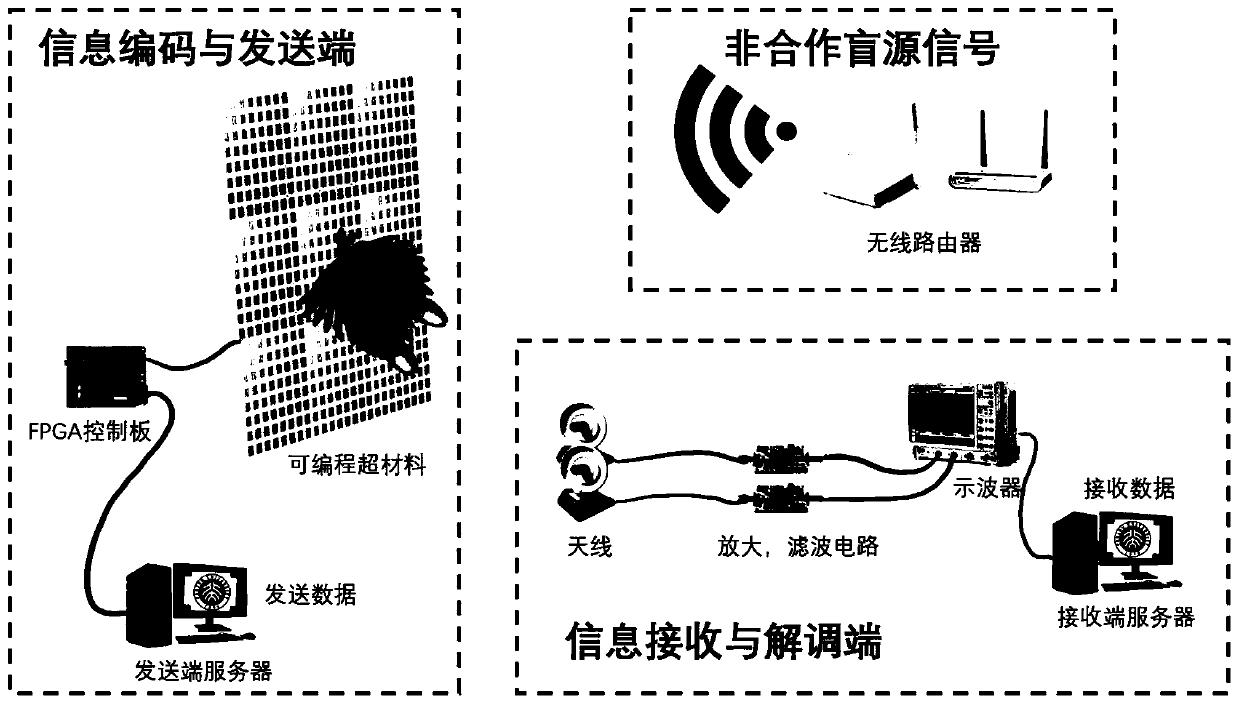Latent communication system and method based on non-cooperative blind source signal
A communication system and non-cooperative technology, applied in the field of passive communication methods, can solve the problems of one-to-one communication with limited number of communication terminals, limited communication capacity and communication distance, and difficulty in achieving passive passive communication between transmitters and receivers. , to achieve the effect of saving carrier transmission power and improving the quality of wireless communication
- Summary
- Abstract
- Description
- Claims
- Application Information
AI Technical Summary
Problems solved by technology
Method used
Image
Examples
Embodiment 1
[0051] In this embodiment, the block diagram of the non-cooperative blind source latent communication system based on WI-FI signals is as follows figure 1 shown. The demodulation process of non-cooperative blind source latent communication system based on WI-FI signal is as follows: figure 2 shown. Among them, the information encoding of the non-cooperative blind source latent communication system based on WI-FI signals and the information sent by the sender are as follows: figure 2 As shown on the far left, the information receiver finally decodes the information as follows figure 2 shown in the middle part.
[0052] In this example, the actual devices used in the non-cooperative blind source latent communication system based on WI-FI signals are as follows: image 3 shown.
[0053] Such as image 3 The non-cooperative blind source latent communication system based on WI-FI signals in this example includes the following three components:
[0054] (1) Information codin...
PUM
 Login to View More
Login to View More Abstract
Description
Claims
Application Information
 Login to View More
Login to View More - R&D
- Intellectual Property
- Life Sciences
- Materials
- Tech Scout
- Unparalleled Data Quality
- Higher Quality Content
- 60% Fewer Hallucinations
Browse by: Latest US Patents, China's latest patents, Technical Efficacy Thesaurus, Application Domain, Technology Topic, Popular Technical Reports.
© 2025 PatSnap. All rights reserved.Legal|Privacy policy|Modern Slavery Act Transparency Statement|Sitemap|About US| Contact US: help@patsnap.com



